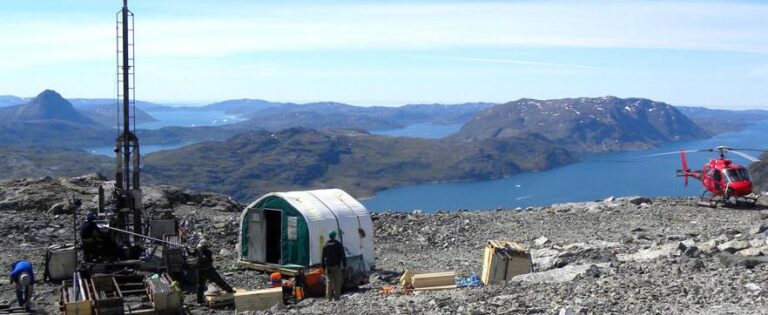Rare earth deposits found in Sweden, Finland, Greece and Spain suggest that Europe could reduce its reliance on imports of these critical raw materials, but the biggest challenge facing scientists is how best to extract and process them.
Kvanefjeld in Greenland is thought to have one of the world’s largest resources of rare earth elements. Image courtesy of Greenland Minerals & Energy Ltd
Rare earth elements are an essential ingredient of many of today’s technologies, from hybrid cars to wind turbines and laptop computers. Currently, all of Europe’s demand is met by imports from elsewhere in the world, and more than 90 % of global rare earth supplies come from China.
However, according to scientists working in the field, Europe has enough rare earth deposits to become self-sufficient, if only we had the capability to mine and extract them. That is why researchers across Europe and neighbouring countries are working together to identify deposits and improve extraction techniques.
The EU-funded EURARE project aims to set up the basis for a European rare earth industry by finding ways to supply both raw materials and rare earth products for use in industries such as automotive, electronics, machinery and chemical.
The project began in January 2013 and more than 30 tonnes of European rare earth ore samples have already been taken for analysis and processing.
“
‘If you want to mine (rare earths), you have to find places where geological processes have concentrated them to high levels in the rocks or sediments.’
One of their main priorities is to identify sites suitable for mining. Dr Kathryn Goodenough from the British Geological Survey, which is a partner on the project, said that in theory there are enough suitable sites to supply all the rare earth elements that Europe needs for the foreseeable future, but the important thing is that the elements can be mined economically and with little environmental impact.
High concentration
‘Interestingly, rare earth elements are not that rare,’ said Dr Goodenough. ‘However, if you want to mine (rare earths), you have to find places where geological processes have concentrated them to high levels in the rocks or sediments.’
The most significant rare earth deposits are found in geological rocks formed in ancient rift zones, where lava forced itself to the surface through cracks in the rock to erupt at volcanoes. Over millions of years, the volcanoes were eroded away, exposing the deep magma chambers where higher concentrations of rare earth elements tend to be found.
Some rare earth mining techniques used in other parts of the world have been shown to be detrimental to the environment, for instance by reducing the quality of surface and ground water around the mining sites. EURARE researchers are therefore also focusing on how to create a European rare earth industry that has a minimal impact on the environment.
Once researchers have identified an area likely to have rare earth enrichment, surface rock samples are taken for analysis. If high levels of rare earth elements are found, boreholes are drilled to investigate beneath the surface. The data can then be used to model how much rare earth is available in the deposit and work out if it is economically feasible to open a mine.
The project has already identified rare earth deposits for further study in Sweden, Finland, Greece, Spain, Greenland, Norway, and Turkey.
Sustainability
The next step is to explore new methods and technologies to process the mined ores and extract the rare earth elements in a cost-effective and sustainable way, because many established techniques involve using strong acids and produce high levels of dust and fluorine.
2013Efforts begin to recycle, reduce and replace rare earthsWith demand for rare earths continuing to rise thanks to their use in electric vehicles, energy-efficient lighting, rechargeable batteries and medical technology, the EU forms the European Rare Earths Competency Network to look at ways of improving rare earth supply security for Europe. Globally, discussions around rare earths turn to how to recycle rare earth elements, how to reduce or replace rare earth usage in products, and how to design alternative products that do not require rare earths.
Researchers are investigating new methods of creating rare earth-free permanent magnets, which are used in technologies such as wind turbines. Image courtesy of IMDEA Nanociencia (NANOPYME Project)
One of the new methods being investigated by EURARE researchers involves the use of ionic liquids. These are molten salts at room temperature that can be used as a special kind of solvent to extract and separate the rare earth elements from a mixture of minerals in the mined rock.
‘Ionic liquids are more efficient, safer and use less reagents (compared to other methods),’ said Damien Krebs, who works for EURARE project partner Greenland Minerals and Energy, a mining company in Greenland. Krebs said that it will take about five years before the process could be used on a commercial scale.
A pilot will be performed in Finland in April 2015 to produce concentrates of rare earth elements, and a pilot plant to extract the elements from the concentrate will open in Germany in July 2015.
If these pilots perform well, and a European refinery could be set up which can compete with Chinese producers on price, Krebs said, ‘this will go a long way to making Europe self-sufficient in rare earths’.

